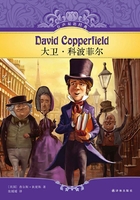第三篇 Love Through Time
爱穿越时光
A Doll for Great-grandmother
杰奎琳·希奇 / Jacqueline Hickey
When my grandfather died, my 83-year-old grandmother, once full of life, slowly began to fade. No longer able to manage a home of her own, she moved in with my mother, where she was visited often by other members of her large, loving family (two children, eight grandchildren, 22 great-grandchildren and two great-great-grandchildren). Although she still had her good days, it was often hard to arouse her interest.
One chilly December afternoon three years ago, my daughter Meagan, then eight, and I were settling in for a long visit with “GG,” as the family called. her, when she noticed that Meagan was carrying her favorite doll.
“I, too, had a special doll when I was a little girl,” she told a wide-eyed Meagan, “I got it one Christmas when I was about your age. I lived in an old farmhouse in Maine, with Mom, Dad and my four sisters, and the very first gift I opened that Christmas was the most beautiful doll you’d ever want to see.”
“She had an exquisite, hand-painted porcelain face, and her long brown hair was pulled back with a big pink bow. Her eyes were blue as blue could be, and they opened and closed. I remember she had a body of kidskin, and her arms and legs bent at the joints.”
GG’s voice dropped low, taking on an almost reverent tone. “My doll was dressed in a dainty pink gown, trimmed with fine lace. But what I especially remember was her petticoat. It was fine batiste, trimmed with rows and rows of delicate lace. And the tiny buttons on her boots were real. Getting such a fine doll was like a miracle for a little farm girl like me — my parents must have had to sacrifice so much to afford it. But how happy I was that morning!”
GG’s eyes filled and her voice shook with emotion as she recalled that Christmas of long ago. “I played with my doll all morning long. She was such a beautiful doll... And then it happened. My mother called us to the dining room for Christmas dinner and I laid my new doll down, ever so gently, on the hall table. But as I went to join the family at the table, I heard a loud crash.”
“I hardly had to turn round—I knew it was my precious doll. I just knew it. And it was. Her lace petticoat had hung down from the table just enough for my baby sister to reach up and pull on it. When I ran in from the dining room, there lay my beautiful doll on the floor, her face smashed into a dozen pieces. I can still see my mother trying to put my poor dolly together again. But it couldn’t be done. She was gone forever.”
A few years later GG’s baby sister was also gone, she told Meagan, a victim of pneumonia. Now the tears in her eyes spilled over—tears, I knew, not only for a lost doll and a lost sister, but for a lost time.
Subdued for the rest of the visit, Meagan was no sooner in the car going home than she exclaimed, “Mom, I have a great idea! Let’s get GG a new doll for Christmas, one exactly like the doll that got broken. Then she won’t cry when she thinks about it.”
My heart filled with pride as I listened to my compassionate little daughter. But where would we find a doll to match GG’s fond memories?
Where there’s a will, as they say, there’s a way. When I told my best friends, Liz and Chris, about my problem, Liz put me in touch with a local dollmaker who made doll heads, hands and feet of a ceramic that closely resembled the old porcelain ones. From her I commissioned a doll head in the style of three-quarters of a century ago— making sure to specify “big blue eyes that opened and closed,” and hands and feet. From a doll supply house I ordered a long brown wig and a kidskin body, and Meagan and I shopped for fabric, lace and ribbon to duplicate the outfit GG had so lovingly described. Liz, who had some experience with a hot-glue gun, volunteered to put the doll together, and as the last days before Christmas raced by, Chris helped me make the doll’s outfit, complete with lacy petticoat. And while Liz, Chris and I searched for doll “boots with real buttons,” Meagan wrote and illustrated the story of the lost doll.















